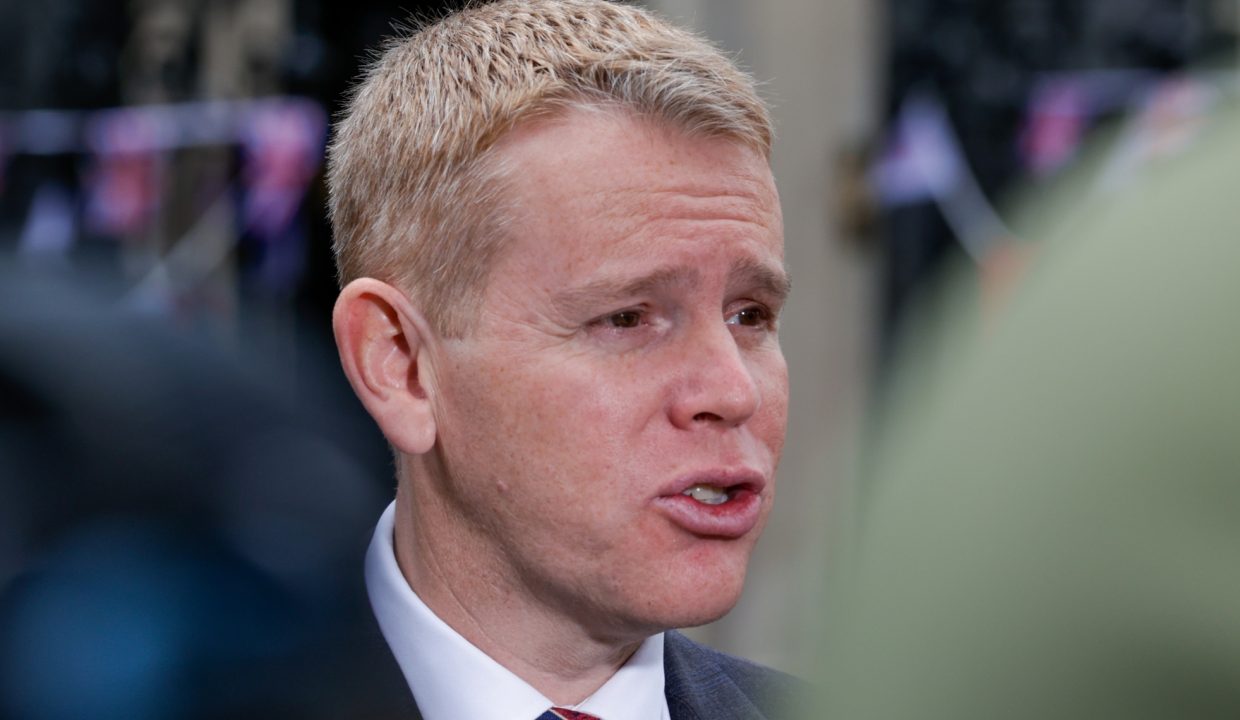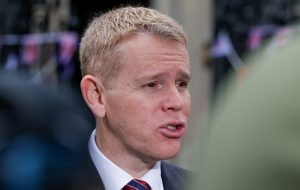
New Zealand Seeks Trade Diversity With China as Hipkins Meets Xi Jinping
Prime Minister Chris Hipkins “Focusing on diversifying exports to China”
New Zealand is focusing on reducing its trade dependence on China and diversifying its exports due to concerns about possible retaliation from China. New Zealand, a member of the Five Eyes intelligence-sharing alliance centered on the United States, has closely observed China’s strong trade retaliation against neighboring Australia and has taken steps to diversify the risks caused by excessive trade dependence on China.
First, looking at the situation in New Zealand, New Zealand rapidly fell into the “swamp of China” after signing a free trade agreement (FTA) with China in 2008. In 2013, just five years after the FTA was signed, New Zealand’s largest trading partner changed from Australia to China.
According to Statistics New Zealand, as of April 1st, New Zealand’s exports to China and Australia were NZD 20.6 billion (approximately KRW 16.5 trillion) and NZD 8.9 billion (approximately KRW 7.2 trillion), respectively, with a difference of more than twice.
What is noteworthy is that China’s imports of New Zealand products are concentrated in specific items such as dairy products, timber, and meat. This was due to China’s economic growth and the increase in affluent and middle-class people during this period.
On the 26th, it was reported that China accounts for 60% of the total market for New Zealand forest products and 40% of New Zealand meat is headed for China. China is also the largest buyer of New Zealand dairy products. In addition, before the COVID-19 pandemic, Chinese tourists were the most numerous visitors to New Zealand.
In other words, there are concerns that New Zealand is heavily dependent on China in terms of trade and tourism.
However, in recent years, as tensions and conflicts between the United States and China over economics and security have intensified, New Zealand’s anxiety has grown.
This is because China is implementing trade retaliation against US allies in a situation where supply chain reorganization excluding China is underway in areas such as advanced semiconductors and core minerals amid disputes between the US and China over Taiwan and the South China Sea.
In particular, in March, Nanaia Mahuta, New Zealand’s Minister of Foreign Affairs visited China and expressed concern about human rights issues in Xinjiang Uygur Autonomous Region of China, infringement of freedom of Hong Kong people, tensions in South China Sea and Taiwan Strait etc.
New Zealand is focusing on reorganizing its existing trade relationship with China. The itinerary for Prime Minister Chris Hipkins’ visit to China from May 25th to 30th was also aligned with trade diversification.
During Prime Minister Hipkins’ visit to China this time, 29 executives from New Zealand’s largest companies accompanied him. Meetings with President Xi Jinping as well as Premier Li Keqiang and Chairman Zhang Dejiang of the National People’s Congress (NPC) Standing Committee are scheduled during his visit to China.
Prior to his visit to China, Prime Minister Hipkins said that “the composition of the delegation reflects our goal of diversifying New Zealand’s exports,” adding that “exports of dairy products, timber and meat to China are still important but we will support emerging sectors such as games health and wellness.”
The delegation led by Prime Minister Hipkins is known to visit Beijing as well as Shanghai and Tianjin.
New Zealand has high hopes for Prime Minister Hipkins who has been trying not to provoke China.
In fact, Prime Minister Hipkins did not sign a Five Eyes statement criticizing China’s human rights abuses and when asked about President Joe Biden’s “Xi Jinping = dictator” remarks he said “China’s form of government is a matter for Chinese citizens” showing cautious behavior.

뉴질랜드, 힙킨스와 시진핑의 만남으로 중국과의 무역 다양성 추구
방중 힙킨스 총리 “대중 수출 다양화에 전력”
뉴질랜드가 중국의 보복 가능성을 우려해 대(對)중국 무역 의존도를 낮추고 수출을 다각화하는 데 전력을 기울이고 있다.
미국 중심의 기밀정보 공유 동맹인 ‘파이브 아이즈'(Five Eyes) 국가인 뉴질랜드는 이웃 나라인 호주에 대한 중국의 강력한 무역 보복을 면밀히 관찰한 터여서 지나친 대중국 무역 의존이 초래할 위험 분산에 나선 것이다.
먼저 뉴질랜드의 상황을 살펴보면, 뉴질랜드는 2008년 중국과 자유무역협정(FTA)을 체결한 이후 ‘중국의 늪’에 급속하게 빠졌다. FTA 체결 5년 만인 2013년 뉴질랜드의 최대 무역 상대는 호주에서 중국으로 바뀌었다.
뉴질랜드 통계청에 따르면 지난 4월 1일 현재 뉴질랜드의 대중국, 대호주 수출액은 각각 206억 뉴질랜드달러(약 16조5천억원), 89억 뉴질랜드달러(약 7조2천억원)로 그 차이가 2배 이상이다.
눈여겨볼 대목은 중국의 뉴질랜드산 제품 수입이 고급 유제품, 원목, 육류 등 특정 품목에 집중됐다는 점이다. 이 시기 중국의 경제 성장과 부유층·중산층 증가에 따른 것이었다.
26일 뉴질랜드산 임산물의 최대 시장이 중국으로 전체의 60%를 차지하고 있으며, 뉴질랜드산 육류는 40%가 중국으로 향한다고 전했다. 뉴질랜드산 유제품의 최대 구매자도 중국이다. 여기에 코로나19 팬데믹(대유행) 이전 뉴질랜드를 찾는 관광객도 중국인이 가장 많았다.
다시 말해 뉴질랜드는 무역과 관광 등에서 중국에 크게 의존하고 있다는 지적이 나온다.
그러나 최근 수년째 미국과 중국 간에 경제·안보를 둘러싼 갈등과 대립이 고조돼온 상황에서 뉴질랜드의 불안감이 커지고 있다.
미중 간의 대만·남중국해 다툼은 물론 첨단 반도체·핵심 광물 등 분야에서 중국을 배제한 공급망 재편이 진행되는 상황에서 중국이 미국의 동맹을 겨냥한 무역 보복을 현실화하고 있기 때문이다.
특히 지난 3월 나나이아 마후타 뉴질랜드 외교부 장관이 중국을 찾아 중국 신장위구르자치구의 인권과 홍콩인의 자유 침해 문제, 남중국해와 대만해협의 긴장 고조 등을 언급하며 우려를 표시했을 정도로 뉴질랜드는 중국에 ‘할 말은 하고’ 있다.
뉴질랜드는 중국과의 기존 무역 관계를 재정비하는 데 주력하고 있다. 크리스 힙킨스 뉴질랜드 총리의 25∼30일 중국 방문 일정도 무역 다각화에 맞춰졌다.
이번 힙킨스 총리의 방중에는 뉴질랜드의 최대 기업 임원 등 29명이 동행했다. 방중 기간에 시진핑 국가주석 이외에 리창 총리, 자오러지 전국인민대표대회(전인대) 상무위원장 등과의 접견이 예정됐다.
힙킨스 총리는 방중에 앞서 “대표단의 구성은 뉴질랜드 수출품을 다양화하려는 목표를 반영하고 있다”면서 “유제품, 목재, 육류의 대중국 수출도 여전히 중요하지만 게임, 건강, 웰빙 등 신흥 분야를 지원할 것”이라고 밝혔다.
힙킨스 총리가 이끄는 대표단은 베이징 이외에 상하이, 톈진 등을 들를 것으로 알려졌다.
뉴질랜드는 중국을 자극하지 않으려고 노력해온 힙킨스 총리에 기대를 걸고 있다.
실제 힙킨스 총리는 중국의 인권 침해를 비판하는 파이브 아이즈 성명서에 서명하지 않는가 하면, 조 바이든 미국 대통령의 ‘시진핑=독재자’ 발언에 대한 견해를 묻자 “중국의 정부 형태는 중국 국민의 문제”라고 말하는 등 조심스러운 행보를 해왔다.
